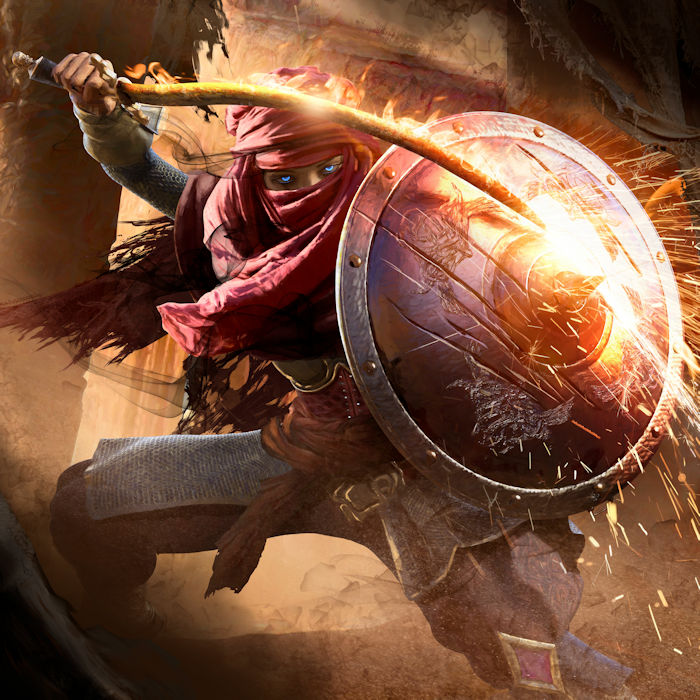Queen Mavia And The Tanukhids Launched A Massive Revolt Against Romans – But Why?
Ellen Lloyd - AncientPages.com - Why warrior queen Mavia launched a massive revolt against ancient Romans is a question a curious historian can ponder long and hard.
But one thing is certain, queen Mavia had no intention of accepting Romans’ terms, whose trademarks were exploitation and harassment of smaller and larger kingdoms. These activities were well-known in the region, and various rulers had objections.
Ancient Romans were naturally powerful and wealthy, but most of their riches came from conquering lands that could not easily defend themselves.
Credit: Adobe Stock - warmtail
Queen Mavia held peaceful relationships with benevolent kings and queens of neighboring kingdoms, but ancient Romans’ desire to spread across foreign territories to establish worldwide domination made them extremely unpopular.
So, one day queen Mavia said enough is enough and decided something must be done against the Romans. Finding allies was not particularly difficult because people of various tribes and kingdoms had just one target – the Roman Empire.
Who Was Queen Mavia?
Mavia (c. 375 - c. 425 CE) was a queen of the Tanukhids, a confederation of Araba tribes sometimes called the Saracens. These people emerged in northern Arabia and south of Syria in the 3rd century BC.
In the 4th century, the Tanukhids allied with Romans in the East and became foederati of Rome, which meant Romans provided them with benefits in exchange for military assistance.
According to this treaty, a kingdom was not obligated to continue providing the Roman Empire with services after the leader’s death.
The Tanukhids who helped defeat Queen Zenobia of Palmyra (c. 240 – c. 274 AD) were mostly Christians.
There is little information about Queen Mavia, but she is considered one of the most powerful women of ancient Arabia after Zenobia.
Historians are still trying to determine whether Queen Mavia was Christian from the beginning or became it only later.
What Caused Queen Mavia’s Revolt?
Shortly after the death of her husband al-Hawari, the last king of the semi-nomadic Tanukh, Queen Mavia revolted against the Romans. The cause of the revolt remains a subject discussed by historians.
It appears religious motives were behind the uprising. Roman emperor Valens refused the requests of the Arabs for an orthodox bishop. Instead, he wanted to send an Arian spiritual leader, which was unacceptable.
But how was this related to the actions undertaken by Queen Mavia? She left Aleppo with her people, went to the desert and forged alliances with various Arab tribes, and launched an attack on ancient Romans.
The most peculiar aspect of this story is that she was not a Christian then, or at least that is the conclusion some historians have reached. It is believed that during her military campaign, she met an ascetic monk who impressed her so much that she became an Orthodox Christian.
In 378 C.E., Queen Mavia and her warriors launched a furious attack on the Romans. Queen Mavia, who often led her army, used effective military tactics and fought guerrilla warfare.
She also utilized the mobility of their military units to conduct numerous raids. She also had the advantage that her warriors were familiar with Roman military tactics after having fought for the empire
Romans were unprepared for these fierce attacks of the Arabic queen and could not crush the revolt.
Many people supported Queen Mavia, who personally led her warriors into battle. She was a brave woman, a strong political leader, and an excellent commander. This meant warriors fully trusted her, and their war against the Romans succeeded.
As much as they may have disliked it, Romans capitulated to a woman, and this wasn’t the first time in their history.
Emperor Valens had no choice but to agree to peace and accept Queen Mavia’s terms. She had one particular wish. She told the Roman Empire she wanted Moses, the ascetic monk she had met earlier, to be ordained a bishop for her people.
She also sent her forces to help the Romans fight the Goths to show her goodwill and respect for the peace treaty.
Mavia, the fierce and determined Arabic warrior queen, died in Anasartha, east of Aleppo, in 425. She is today recognized as one of the most courageous ancient women in the history of Syria.
Updated on March 12, 2023
Written by Ellen Lloyd – AncientPages.com
Copyright © AncientPages.com All rights reserved. This material may not be published, broadcast, rewritten or redistributed in whole or part without the express written permission of AncientPages.com
More From Ancient Pages
-
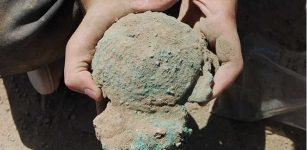 Rare Discovery Of 4,300-Year-Old Copper Ingots Left By Mistake In A Settlement In Oman
Archaeology | Jun 2, 2023
Rare Discovery Of 4,300-Year-Old Copper Ingots Left By Mistake In A Settlement In Oman
Archaeology | Jun 2, 2023 -
 Unusual 300,000-Year-Old Jawbone May Belong To An Unknown Vanished Human Lineage
Archaeology | Dec 18, 2023
Unusual 300,000-Year-Old Jawbone May Belong To An Unknown Vanished Human Lineage
Archaeology | Dec 18, 2023 -
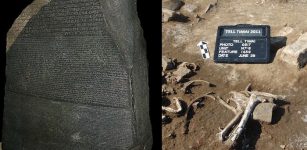 Archaeologists Dug For Evidence Of The Rosetta Stone’s Ancient Egyptian Rebellion – Here’s What They Found
Archaeology | Mar 7, 2023
Archaeologists Dug For Evidence Of The Rosetta Stone’s Ancient Egyptian Rebellion – Here’s What They Found
Archaeology | Mar 7, 2023 -
 Carbonized Herculaneum Papyrus Begins Revealing Its Ancient And Historical Secrets
Artifacts | Apr 24, 2024
Carbonized Herculaneum Papyrus Begins Revealing Its Ancient And Historical Secrets
Artifacts | Apr 24, 2024 -
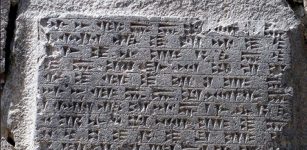 Ancient City Of Metsamor – Captured And Destroyed By Argishti I, The Ruler Of Urartu
Civilizations | Sep 11, 2015
Ancient City Of Metsamor – Captured And Destroyed By Argishti I, The Ruler Of Urartu
Civilizations | Sep 11, 2015 -
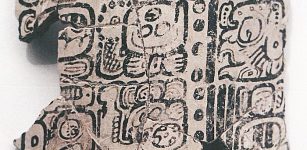 Painted Komkom Vase With Longest Hieroglyphic Text Unearthed In Belize
Archaeology | Apr 24, 2019
Painted Komkom Vase With Longest Hieroglyphic Text Unearthed In Belize
Archaeology | Apr 24, 2019 -
 Highly Debated Early Homo Erectus Skull From Turkana – Age And Origin Now Verified
Archaeology | Apr 20, 2021
Highly Debated Early Homo Erectus Skull From Turkana – Age And Origin Now Verified
Archaeology | Apr 20, 2021 -
 Remains Of Ancient Predators Shed Light On How Humans Did Or Didn’t Find Food
Archaeology | May 2, 2022
Remains Of Ancient Predators Shed Light On How Humans Did Or Didn’t Find Food
Archaeology | May 2, 2022 -
 Mystery Of The Ancient Skull Found In Ephesus Solved – It Did Not Belong To Arsinoë IV, Cleopatra’s Sister
Archaeology | Jan 10, 2025
Mystery Of The Ancient Skull Found In Ephesus Solved – It Did Not Belong To Arsinoë IV, Cleopatra’s Sister
Archaeology | Jan 10, 2025 -
 Human Occupation In Lava Tube Cave In Saudi Arabia – First Evidence Discovered
Archaeology | Apr 18, 2024
Human Occupation In Lava Tube Cave In Saudi Arabia – First Evidence Discovered
Archaeology | Apr 18, 2024 -
 Unexplained Forest Mystery In Oregon Baffles Scientists
Featured Stories | Jun 24, 2024
Unexplained Forest Mystery In Oregon Baffles Scientists
Featured Stories | Jun 24, 2024 -
 1,000-Year-Old Bone Skate Found In Moravian City Of Přerov, Czech Republic
Archaeology | Mar 20, 2024
1,000-Year-Old Bone Skate Found In Moravian City Of Přerov, Czech Republic
Archaeology | Mar 20, 2024 -
 Sacsayhuamán – Was It Built By ‘Demons’ Or Viracocha The Bearded God?
Ancient Mysteries | Apr 10, 2014
Sacsayhuamán – Was It Built By ‘Demons’ Or Viracocha The Bearded God?
Ancient Mysteries | Apr 10, 2014 -
 Remains at Crenshaw Site Are Local, Ancestors Of Caddo – New Study
Archaeology | Jun 15, 2023
Remains at Crenshaw Site Are Local, Ancestors Of Caddo – New Study
Archaeology | Jun 15, 2023 -
 Unexpected Substance Found In Ancient Maya City May Have Arrived Through Distant Trade
Archaeology | Dec 2, 2024
Unexpected Substance Found In Ancient Maya City May Have Arrived Through Distant Trade
Archaeology | Dec 2, 2024 -
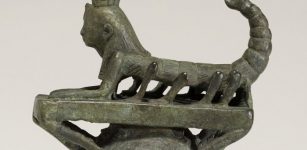 Mysterious Scorpion Goddesses In Myths And Legends
Egyptian Mythology | Jan 26, 2016
Mysterious Scorpion Goddesses In Myths And Legends
Egyptian Mythology | Jan 26, 2016 -
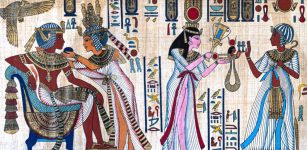 Letters Reveal How Ancient Egyptians Argued With Friends And What Angered Them
Civilizations | Oct 18, 2020
Letters Reveal How Ancient Egyptians Argued With Friends And What Angered Them
Civilizations | Oct 18, 2020 -
 Was 4,000-Year-Old Seahenge In Norfolk Built To Battle Climate Change?
Archaeology | May 31, 2024
Was 4,000-Year-Old Seahenge In Norfolk Built To Battle Climate Change?
Archaeology | May 31, 2024 -
 Mythical Biringan City – Invisible Portal To Another World Where Dangerous Engkantos Reside
Featured Stories | Feb 2, 2018
Mythical Biringan City – Invisible Portal To Another World Where Dangerous Engkantos Reside
Featured Stories | Feb 2, 2018 -
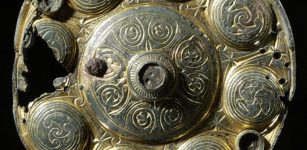 Viking’s Symbols Of Travels Prestige And Adventure Were Imported From Abroad
Ancient Symbols | Oct 1, 2015
Viking’s Symbols Of Travels Prestige And Adventure Were Imported From Abroad
Ancient Symbols | Oct 1, 2015

